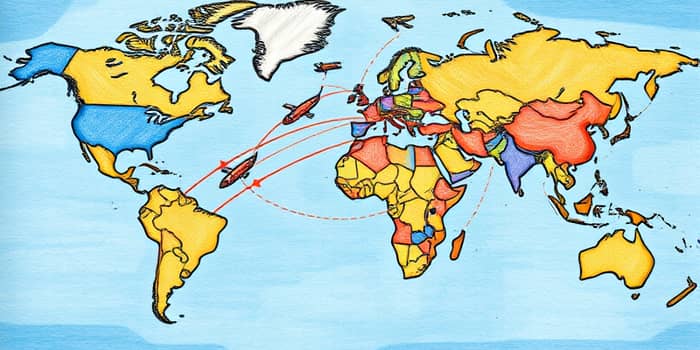
In an era marked by escalating political rivalries and economic nationalism, global trade corridors are being redrawn. Nations and corporations must navigate an ever-shifting landscape, balancing risk and opportunity to sustain growth and security.
The world’s supply chains are under unprecedented strain. From the U.S.–China trade decoupling to the fallout of the Russia-Ukraine war and the Israel-Hamas conflict, multiple forces converge to reshape cross-border commerce.
Each driver increases operational complexity. For example, every 10% rise in geopolitical distance translates into a 2% drop in bilateral trade flows, highlighting the direct link between politics and commerce.
Geopolitical realignments are most visible in major economies. The U.S. retreat from China has spurred growth in Mexico and Vietnam, while Europe’s reduction in Russian energy imports has deepened ties with the United States.
China, facing Western tariffs and diplomatic pushback, now focuses on developing economies. Trade with advanced economies has declined sharply, replaced by partnerships across Africa, Latin America, and Southeast Asia.
This data underscores the speed and scale of reconfiguration. As aligned blocs strengthen, fragmentation risks could shave over 5% off long-term global GDP.
Global firms are responding with innovation and agility. To mitigate disruption, companies are investing in comprehensive adaptation strategies and planning that span sourcing, production, and distribution.
These measures not only reduce vulnerability but can also unlock new efficiencies, turning adversity into competitive advantage.
While geopolitical tension breeds uncertainty, it also creates openings for growth and innovation. The Asia-Pacific region remains a long-term engine of trade expansion, driven by intra-Asian commerce and resource development.
Yet risks persist. Further tariff escalations are anticipated around upcoming elections, and rapid technological shifts could outpace regulatory frameworks.
To thrive in this complex environment, stakeholders must prioritize supply chain resilience and security. Governments, multinationals, and SMEs alike can benefit from:
By embracing these strategies, the global community can transform fragmentation into a catalyst for innovation, sustainability, and inclusive growth.
In a world where alliances shift and tensions flare, the agility to reimagine trade routes and reinforce networks is no longer optional—it’s imperative. Companies and countries that act decisively will not only safeguard their interests but also help shape a more resilient, interconnected global economy.
References













